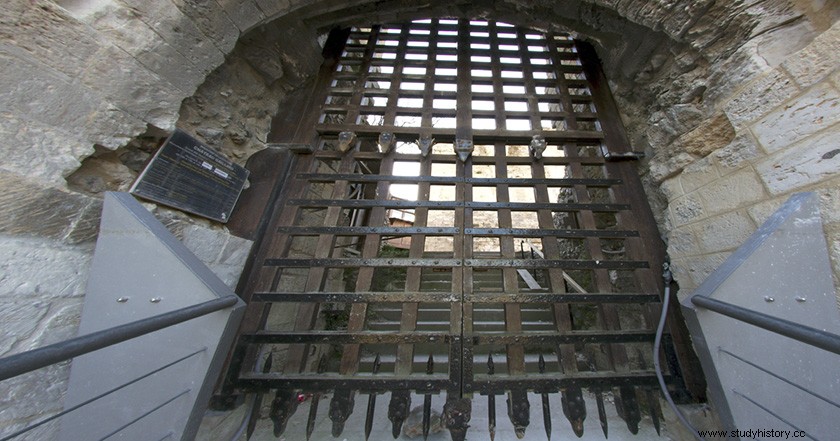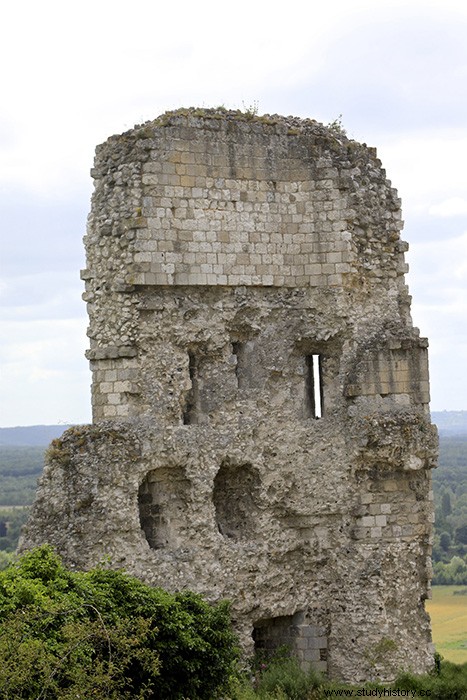
A few days ago in Walking through history we addressed a story about the Third Crusade, which ended with the confrontation of two of the most important knights of the Middle Ages, Saladin and Richard the Lionheart. The article that we present to you today could well be a continuation of that story. It is only necessary to remember the departure of Richard I from the East, after failing to reconquer the Holy City of Jerusalem for the Christians, and in the face of the problems that his main enemy, his crusade partner, the King of France Philip II, was causing him in Europe. . I leave you the link of the referred article:the-third-crusade
Richard I took two years to return to England, since, on his way through Austria, the king of that country, Leopold V, ordered him to be arrested to accuse him of the death of his cousin Conrad of Montferrat. He was only able to get out of the imposed prison thanks to the insistence of his mother, the great Eleanor of Aquitaine, after collecting the sum of money required by her jailers. In the spring of 1194 he was back in England and with his sights set on his great rival.
The construction of the Château de Gaillard.

France at the end of the 12th century
It is necessary to analyze the map of France to understand the political complexity of the territory of the Franks at the end of the 12th century. At first glance we can see the extensive list of counties and dukedoms in which the territory of present-day France was divided. The color blue, around Paris, was the only territory owned by the Capetian Dynasty, the heir to the Frankish kings. But what interests us for our story is the situation of the Duchy of Normandy, at that time Richard the Lionheart was King of England and Count of Normandy, a territory that he was not willing to lose.
The advantageous position of Normandy was candy for Felipe II, given the necessary access to the sea to continue expanding the territories of France, the best way being the Seine river. It is there, precisely next to the small fishing village of Les Andelys, where Richard I had Gaillard Castle built, precisely to prevent such expansion.

Views from Gaillard Castle
The castle was built in just two years, between 1195-1197, according to some calculations it could have cost the English Crown the not inconsiderable figure of 20,000 pounds. As there is no documentation of the construction, it is speculated that it could have been directed by Richard the Lionheart himself, protected by his visit to the different Crusader castles in Syria, including the famous Crac de los Caballeros.

Gaillard Castle today

Interesting image of Gaillard Castle in the year 1900
Like that one, it had concentric defensive rings, in this case three. Inside, the great main tower was built to house the royal residence. Around it, the main buildings for the maintenance of the troops were located, see, stables, workshops, or warehouses, all with the aim of resisting long sieges. The outer wall was festooned, in the shape of a pentagon and with five defensive towers, in which a system imported from Syria was used for the first time, the machicolations, a kind of blasting from which projectiles could be thrown vertically, at the trying to scale the defensive wall.

Example of machicolations in the castle of Caen
The castle was the main defensive installation of the river, but not the only one, on the other side of the meander there was another small fortification and between both a network of chains that could be raised to the passage of ships to prevent their advance.
Death of Richard I and loss of Gaillard Castle.
Richard the Lionheart must have spent little time in Gaillard Castle. In the spring of 1199 he once again showed his restless ass and determined to spend his life from war to war. The Viscount of Limousin (now Limoges), a certain Aimar V, becomes strong in the castle of Châlus Chabrol, so Ricardo decides to go, to protect the heritage of his mother Eleanor in the Duchy of Aquitaine. The siege by all indications seemed easy, the viscount's forces were few, but the English king did not take the necessary precautions. One of the nights, together with his entourage, he went out to check on the progress of the siege without his usual mail mail, with the misfortune that an arrow landed on his unprotected shoulder. A common wound in medieval wars, but which caused a major infection in our protagonist who died a few days later.

Richard the Lionheart at Fontevrault Abbey
The succession problem of Richard I will end up taking its toll on the Kingdom of England, Arthur I of Britain had been chosen by Richard himself as his successor, but during the absence of the latter in the final period of the Third Crusade, the Breton count had approached positions towards the king of France. So with the support of his mother Eleanor of Aquitaine, John I was crowned King of England, one of his first tasks to eliminate the competition. For sure, the reasons for the death of Arthur I are unknown, but John's hand has always hovered over it.
The truth is that the English heir, Juan sin Tierra, would soon make good on his nickname. The death of Ricardo and the succession disputes were used by Henry II to take positions in Normandy, the latter also had the help of Breton and Norman nobles unwilling to trust, after the events with Arthur I, in the English king. In the summer of 1204, after a long siege and John I's inability to defend Gaillard Castle, it fell into the hands of the Capetian king.
Eight centuries after construction.
Let us remember that we started by comparing the Castle of Gaillard with the Castle of the Crac de los Caballeros. That said, it is evident that today we do not know, after the war in Syria, the state of the Crac de los Caballeros, but before this last war it was considered to be the best preserved in the world, a fact that cannot be extrapolated to our protagonist of today.
Gaillard Castle was a spectator from the front line of the Hundred Years' War, in which it passed from French to English hands on numerous occasions, so its destruction and reconstruction led to continued deterioration. In the year 1599, that is, a century and a half after that war, the French King Henry IV ordered its destruction due to the high cost of its repairs.


Two other images of Gaillard Castle
This was not carried out completely, and since 1862 it is a historic monument in France, the central tower can be visited in the summer months, the rest of the hill is a space through which you can walk and contemplate the spectacular views of the Seine River, and the enormous proportions that the Crusader Castle of Richard the Lionheart came to have in its construction.
More info:
castlesoffrance
Images:
commons.wikimedia
flickr
